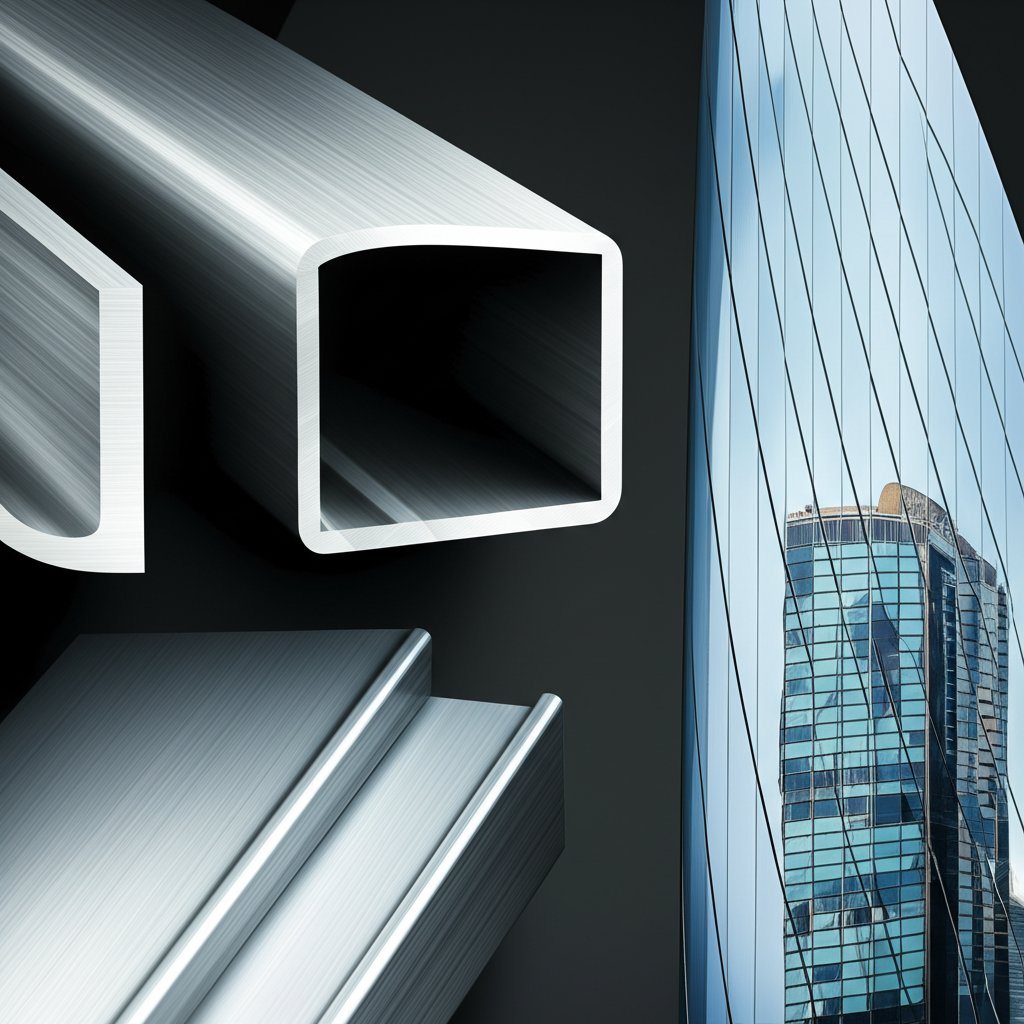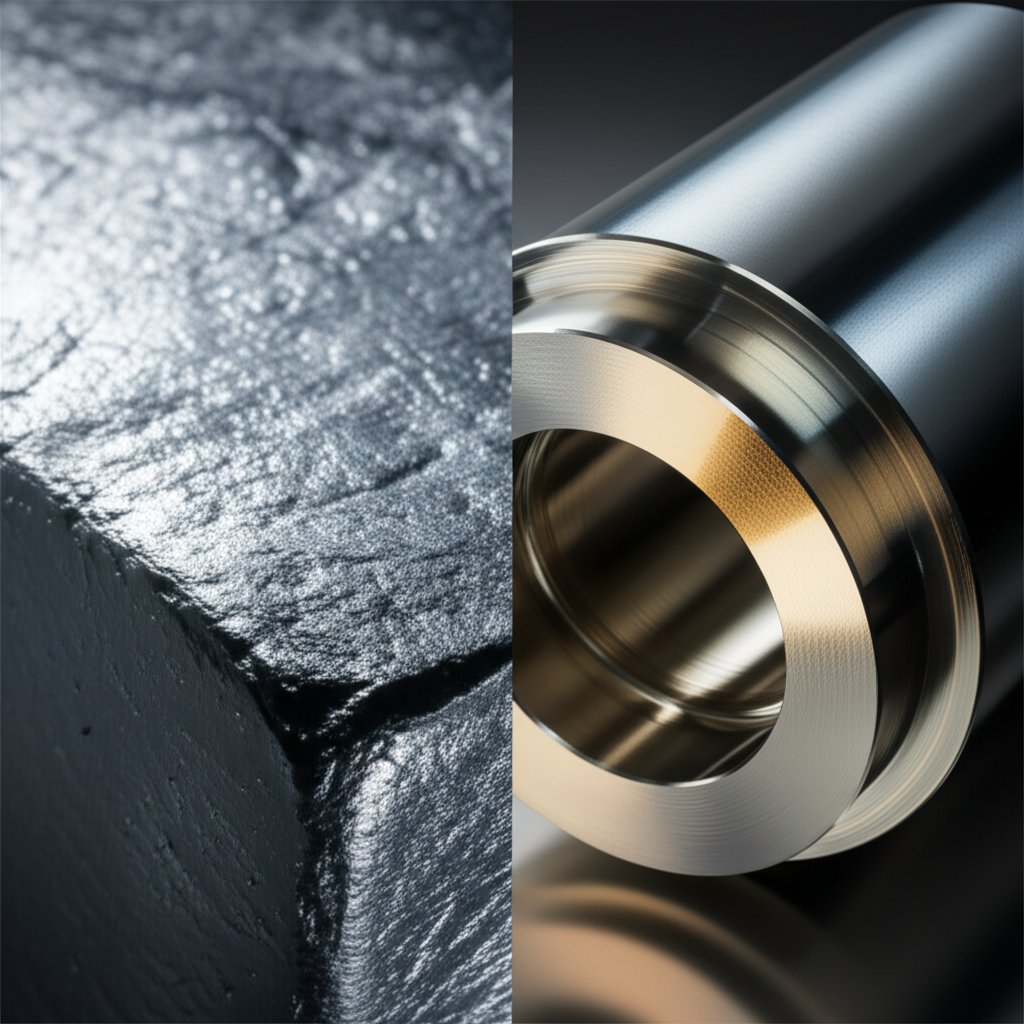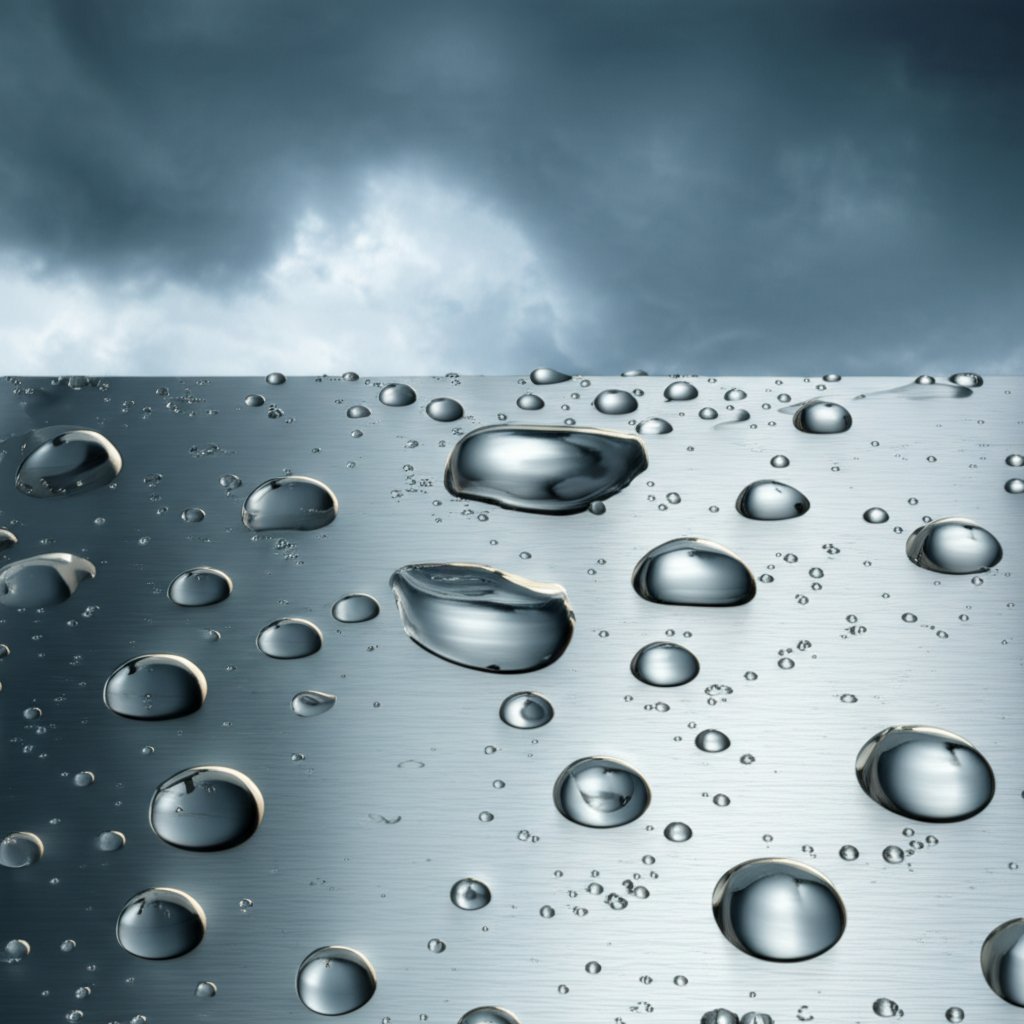
When you’re searching for a material that can stand up to harsh conditions—think saltwater, heavy loads, or extreme weather—what comes to mind? For many engineers and designers, 5058 aluminum quickly rises to the top of the list. But what makes this alloy so special, and how does it fit into the broader world of aluminum materials?
5058 aluminum alloy is a standout member of the 5000 series, a family of aluminum-magnesium alloys celebrated for their impressive strength and corrosion resistance. Unlike some aluminum alloys that rely on heat treatment to boost performance, 5058 is non-heat-treatable. Instead, its properties are achieved through careful control of its composition and mechanical working processes. This means you get high strength and durability straight from the mill, without the extra steps or complexities of heat treatment.
So, where does 5058 fit within the 5000 series? Imagine the 5000 series as a toolbox filled with solutions for tough jobs. Alloys in this group are known for their high magnesium content, which delivers a one-two punch of strength and corrosion resistance. 5058 takes these traits and pushes them further, offering an exceptional strength-to-weight ratio and outstanding ability to resist corrosion—especially in environments where other metals might fail. This makes it an ideal choice for industries like marine, transportation, and construction, where reliability and longevity are non-negotiable (Shengxin Aluminum).
5058 aluminum wasn’t developed by accident—it was engineered for use in demanding environments where ordinary materials just won’t do. Whether you’re building a boat hull that must withstand saltwater for decades or constructing lightweight yet robust transportation components, this alloy is up to the task.
Curious about what sets 5058 apart from other alloys? In the following sections, we’ll break down its chemical composition and key properties, explore its unique benefits, look at real-world applications, and see how it compares to other popular aluminum alloys. By the end, you’ll have a clear understanding of why 5058 aluminum is a go-to solution for high-performance projects.

Ever wonder what gives 5058 aluminum its reputation for strength and resilience? The answer lies in its unique blend of elements and the resulting physical and mechanical properties. Let’s break down what’s inside this alloy and how each component contributes to its performance—so you know exactly what you’re working with.
Sounds complex? Don’t worry—understanding the composition is easier than you think. Like other 5000 series alloys, 5058 is primarily an aluminum-magnesium alloy. Magnesium is the star here, and it’s what gives this material its muscle. Typically, you’ll find magnesium content in the range of 3–5% by weight. Why does this matter? Magnesium greatly enhances both the strength and corrosion resistance of the alloy, making it a top choice for tough environments.
But magnesium isn’t the only player. 5058 aluminum may also contain small amounts of other elements, each with a specific role:
Imagine building a recipe: each ingredient is carefully measured to balance strength, formability, and resistance to the elements. This precise composition is what sets 5058 apart from more basic aluminum alloys (Yuanda Metals).
Now, let’s get practical. When you’re choosing a material for a demanding application, numbers matter. Here’s a look at the typical 5058 aluminum properties you’ll encounter in real-world use:
| Property | Typical Value | What It Means |
|---|---|---|
| Tensile Strength (Rm) | 270–350 MPa | Maximum stress before breaking—shows overall strength. |
| Yield Strength (Rp0.2) | 115–240 MPa | Stress at which permanent deformation begins—important for structural parts. |
| Elongation | 10–20% | How much it can stretch before breaking—indicates ductility. |
| Hardness | 60–80 HB | Resistance to indentation and wear—useful for moving parts. |
| Fatigue Strength | 80–100 MPa | Ability to withstand repeated loading—crucial for dynamic environments. |
These numbers mean that 5058 aluminum offers an excellent combination of strength and flexibility, making it suitable for everything from ship hulls to pressure vessels. If you’re specifically interested in 5058 aluminum tensile strength, you’ll notice it stands out among non-heat-treatable alloys for its ability to handle high loads without permanent deformation.
Beyond strength, the physical characteristics of this alloy are equally important. Here’s a quick overview to help you visualize how it performs in real-world applications:
Put simply, these physical properties mean you get a material that’s light, tough, and able to handle both thermal and mechanical stresses. Imagine designing a boat that’s not only strong but also light enough to float higher and run faster—5058 aluminum makes that possible.
Understanding these key characteristics sets the stage for exploring the true advantages of this alloy. Next, we’ll dive into the unique benefits that make 5058 aluminum a top choice for engineers and designers working in challenging environments.
When you’re choosing a material for marine, construction, or transportation projects, you want something that won’t let you down—no matter the environment. So, what truly sets 5058 aluminum apart from the crowd? Let’s break down the 5058 aluminum benefits that make it a go-to choice for demanding applications.
Imagine a ship’s hull battling relentless saltwater or a bridge exposed to industrial pollutants. Most metals would quickly corrode, but 5058 aluminum thrives in these settings. Thanks to its high magnesium content, this alloy naturally forms a robust oxide layer that shields it from corrosive elements, especially in marine and coastal environments. This self-protecting barrier means less maintenance and longer service life—even where salt, humidity, or industrial chemicals are a constant threat (see detailed insights).
Ever wondered how to achieve robust structures without adding unnecessary weight? With 5058 aluminum, you get the best of both worlds. Its impressive strength-to-weight ratio allows for lightweight designs that don’t compromise on durability or safety. This is particularly valuable in transportation and aerospace, where every pound saved translates to improved efficiency and performance.
When assembling large structures or intricate components, weldability is key. 5058 aluminum stands out for its good weldability, especially when paired with compatible filler alloys like 5356. This means you can achieve strong, durable joints without sacrificing the alloy’s corrosion resistance or mechanical properties. Whether you’re fabricating ship hulls or custom architectural features, this weldability ensures design flexibility and long-term integrity.
Ever faced a project that called for custom shapes or tight tolerances? 5058 aluminum’s formability in certain tempers allows it to be shaped, extruded, or drawn into complex profiles without cracking or losing strength. This adaptability is a game-changer for industries needing bespoke components or innovative designs.
Some materials become brittle or lose strength in the cold—but not 5058 aluminum. Its mechanical properties remain stable even at low temperatures, making it a reliable option for cryogenic storage, arctic structures, or aerospace components exposed to extreme conditions.
"5058 aluminum delivers a rare combination of corrosion resistance, strength, and versatility—making it indispensable for industries where failure is not an option."
In summary, the unique blend of 5058 aluminum corrosion resistance, strength, and processability means you’re not just choosing a material—you’re investing in long-term reliability and performance. Next, we’ll see how these benefits translate into real-world applications across marine, transportation, aerospace, and beyond.

When you think about materials that tackle tough jobs—whether braving salty seas, supporting heavy structures, or keeping vehicles light and efficient—5058 aluminum stands out. But where, exactly, does this alloy make the biggest impact? Let’s explore the most common 5058 aluminum applications and see how its unique properties deliver real-world value across industries.
Imagine the possibilities: from the hull of a ship to the skin of a building, this alloy’s versatility is unmatched. Its adaptability is further enhanced by the variety of forms available—sheet, plate, coil, extrusion, and foil—each tailored to specific industrial needs (Alibaba).
Looking for 5058 aluminum for sale? With such a broad range of applications and proven performance, it’s no surprise that this alloy is a staple in global supply chains. In the next section, we’ll take a closer look at how fabrication processes—like machining, forming, and welding—unlock even more potential from this remarkable material.
Ever wondered how a high-performance alloy like 5058 aluminum transforms from raw material into durable marine hulls, sleek vehicle panels, or intricate architectural profiles? The answer lies in its fabrication characteristics—how it responds to machining, forming, welding, and finishing. Let’s break down the practical steps and best practices for unlocking the full potential of this alloy, whether you’re a manufacturer, designer, or fabricator.
If you’ve ever faced the challenge of machining aluminum, you know that not all alloys are created equal. So, what makes 5058 aluminum machining stand out? Thanks to its balanced composition and moderate hardness, this alloy offers excellent machinability—meaning it can be cut, drilled, or milled with precision and speed.
Imagine producing complex aerospace or marine components with tight tolerances—5058 aluminum’s machinability ensures efficiency without sacrificing accuracy.
Need to create custom profiles, curved panels, or deep-drawn parts? 5058 aluminum’s formability is a clear advantage, especially in certain tempers. Its ductility allows for a range of forming techniques:
This versatility in forming translates directly into design freedom and manufacturing efficiency.
Welding aluminum can be tricky—but with 5058, you’ll notice a combination of excellent weldability and robust mechanical properties. Here’s what you need to know about 5058 aluminum welding:
Whether you’re fabricating a ship hull or assembling a custom extrusion, these welding practices will help you achieve joints that are as durable as they are reliable.
Unlike some alloys that require heat treatment to reach peak performance, 5058 aluminum is non-heat-treatable. Its properties are developed through mechanical working and precise alloying—meaning you get predictable strength and ductility straight from the mill.
Imagine an exterior building panel that not only resists weathering but also maintains its appearance for years—finishing options with 5058 make this possible.
While 5058 aluminum’s fabrication characteristics are impressive, achieving the best results requires expertise and advanced processing capabilities. Working with experienced manufacturers ensures:
For example, Shengxin Aluminum leverages over 100 production lines and deep processing workshops to deliver high-strength, custom 5058 aluminum profiles for rail transit, energy-efficient buildings, and more. Their expertise in extrusion, welding, and surface finishing means your project benefits from both material performance and manufacturing precision.
In summary, 5058 aluminum’s ease of machining, adaptable forming, and reliable welding make it a fabricator’s dream—especially when paired with the right manufacturing partner. Next, let’s see how it stacks up against other popular aluminum alloys, helping you make the best material choice for your next project.
When you’re selecting the right aluminum alloy for your next project, it’s easy to feel overwhelmed by the choices. Should you pick 5058 aluminum, or would another alloy give you better results? To help you make an informed decision, let’s put 5058 side-by-side with some of its most popular counterparts—5052, 5083, and 6061—and see how they stack up across the properties that matter most.
Imagine you’re building a marine vessel, an aircraft panel, or a structural frame. Each application demands a careful balance of strength, corrosion resistance, weldability, and formability. Here’s a quick comparison to guide you through the differences and similarities among these alloys, including the 5058 aluminum equivalent options often considered in industry.
| Property | 5058 Aluminum | 5052 Aluminum | 5083 Aluminum | 6061 Aluminum |
|---|---|---|---|---|
| Alloying Elements | Al-Mg (with Pb in some variants) | Al-Mg (with small Cr) | Al-Mg (with Mn, Cr) | Al-Mg-Si (with some Cu, Cr) |
| Heat Treatable? | No | No | No | Yes (T6, T651 tempers) |
| Tensile Strength (MPa) | 270–350 | 210–260 | 275–350 | 260–310 (T6) |
| Yield Strength (MPa) | 115–240 | 130–195 | 125–215 | 240–275 (T6) |
| Elongation (%) | 10–20 | 7–12 | 12–17 | 8–17 |
| Corrosion Resistance | Excellent (marine grade) | Excellent (marine grade) | Superior (marine & chemical) | Good (less in saltwater) |
| Weldability | Excellent | Excellent | Excellent | Good |
| Formability | Good (varies by temper) | Excellent | Good | Fair (best when not bent) |
| Fatigue Strength | 80–100 MPa | 70–90 MPa | 90–110 MPa | 75–90 MPa |
| Typical Applications | Marine, transport, pressure vessels, cryogenics | Marine, fuel tanks, enclosures, general fabrication | Shipbuilding, offshore, pressure vessels, cryogenics | Structural, aerospace, machinery, automotive |
Still unsure which alloy fits your project? Here are some practical scenarios:
"When evaluating 5058 aluminum vs 5083 or 6061, always match the alloy’s strengths to your project’s most critical demands—whether that’s corrosion resistance, strength, or fabrication ease."
For complex projects or when you need custom extrusions and deep processing, working with experienced manufacturers is key. Companies like Shengxin Aluminum offer advanced capabilities in producing high-strength 5058 and other aluminum alloy profiles, ensuring your material not only meets but exceeds performance expectations.
Now that you’ve seen how 5058 aluminum compares to its closest equivalents, let’s look deeper at the science behind its standout corrosion resistance—and how to maintain its longevity in the harshest environments.

When you picture a boat hull slicing through salty waves or a building facade weathering years of rain and pollution, you might wonder—how does 5058 aluminum stay so resilient? The answer lies in the science of corrosion resistance and the smart maintenance practices that keep this alloy performing at its best for decades.
Sounds complex? Let’s break it down. The standout corrosion resistance of 5058 aluminum is largely due to its high magnesium content. When exposed to air and moisture, magnesium in the alloy reacts to form a thin, tightly bonded oxide layer on the surface. This natural barrier acts like an invisible shield, protecting the underlying metal from aggressive elements such as saltwater and industrial pollutants (Shengxin Aluminum).
Imagine the difference: where ordinary metals might rust or degrade quickly, 5058 aluminum continues to perform—year after year—thanks to this self-renewing oxide film.
While 5058 aluminum is engineered for durability, it’s important to be aware of environmental factors that can affect its corrosion resistance:
Ever notice white spots or dullness on exposed aluminum? That’s often the result of improper drainage, trapped moisture, or contact with incompatible materials. By addressing these factors in design and installation, you’ll extend the service life of your components.
Good news: maintaining 5058 aluminum is straightforward. Here’s how to keep your investment looking and performing its best:
Wondering about longevity? With basic care and the right design, 5058 aluminum structures can last for decades—even in the harshest settings.
While the alloy’s natural resistance is impressive, the quality of fabrication and finishing can make all the difference. Working with experienced suppliers ensures:
For projects where longevity and appearance are critical, partnering with a reputable manufacturer such as Shengxin Aluminum offers peace of mind. Their expertise in producing and finishing 5058 aluminum profiles means your components are built to last—no matter the environment.
Next, we’ll wrap up with a summary of why 5058 aluminum is a reliable, high-performance solution for demanding industries—and how to ensure you’re getting the best material for your needs.
Have you ever wondered what makes a material truly indispensable across industries as diverse as marine engineering, transportation, and architecture? Imagine a single alloy that combines strength, resilience, and adaptability—this is the promise of 5058 aluminum. So, why do engineers and manufacturers consistently turn to this high-strength aluminum alloy for their most demanding projects?
When you’re selecting a material, you want more than just numbers on a datasheet—you want proven reliability and value over the long haul. 5058 aluminum stands out not only for its technical properties but also for its track record in real-world applications:
Imagine the impact on your project: lighter ships that travel farther, vehicles that consume less fuel, and buildings that stand strong for decades with minimal upkeep. That’s the real-world value of a trusted 5058 aluminum supplier.
Of course, unlocking the full benefits of 5058 aluminum requires more than just choosing the right alloy—it takes expertise in fabrication, finishing, and quality control. That’s why it’s essential to work with experienced manufacturers who understand the nuances of this material and can deliver tailored solutions for your needs.
For those seeking top-tier performance and custom profiles, Shengxin Aluminum stands out as a leader in the industry. With over 100 production lines and deep processing capabilities, Shengxin offers everything from precision extrusions to advanced surface finishes. Their commitment to quality ensures that every batch of 5058 aluminum meets the highest standards for strength, durability, and appearance.
"When you choose 5058 aluminum and partner with a reliable supplier, you’re investing in the long-term success and resilience of your project."
Ready to take the next step? Consult with a trusted 5058 aluminum supplier like Shengxin Aluminum to explore how this remarkable alloy can power your innovations—whether you’re building for the sea, the sky, or the city skyline. The right material, backed by the right expertise, can make all the difference.
5058 aluminum stands out due to its higher magnesium content, delivering an improved strength-to-weight ratio and exceptional corrosion resistance. Its non-heat-treatable nature and excellent weldability make it a preferred choice for marine, transport, and architectural applications where durability and reliability are critical.
5058 aluminum excels in marine environments because it naturally develops a protective oxide layer, which shields it from saltwater and humidity. This resistance minimizes maintenance needs and extends the service life of ship hulls, offshore structures, and other components exposed to harsh marine conditions.
Yes, 5058 aluminum is highly regarded for its weldability, especially when paired with compatible filler alloys like 5356. It supports various fabrication methods, including machining, forming, and deep drawing, making it versatile for complex or custom-designed parts.
5058 aluminum is widely used in shipbuilding, offshore platforms, vehicle bodies, fuel tanks, architectural facades, pressure vessels, and cryogenic storage. Its combination of strength, corrosion resistance, and formability makes it ideal for demanding structural and industrial uses.
Shengxin Aluminum is a leading manufacturer with extensive production capabilities, offering precision extrusions, deep processing, and advanced surface finishes. Their expertise ensures consistent quality and tailored solutions for high-strength 5058 aluminum profiles in various industries.
 บริการออนไลน์
บริการออนไลน์ 0086 136 3563 2360
0086 136 3563 2360 sales@sxalu.com
sales@sxalu.com +86 136 3563 2360
+86 136 3563 2360